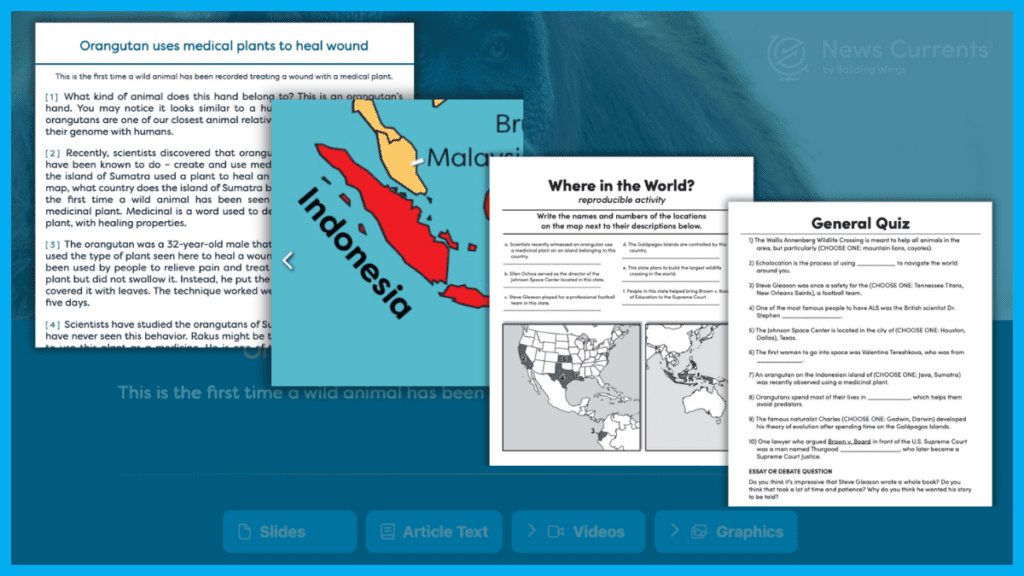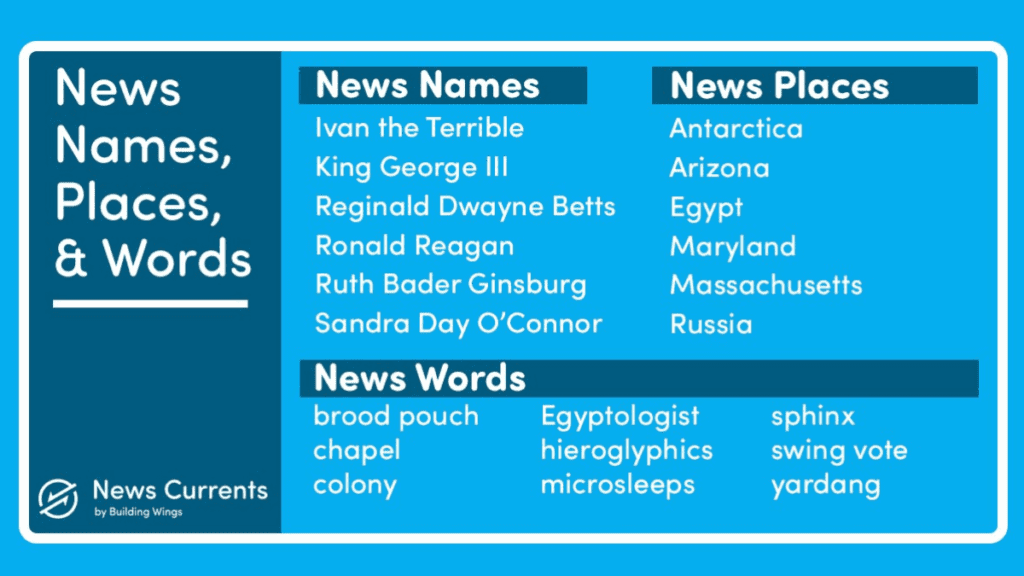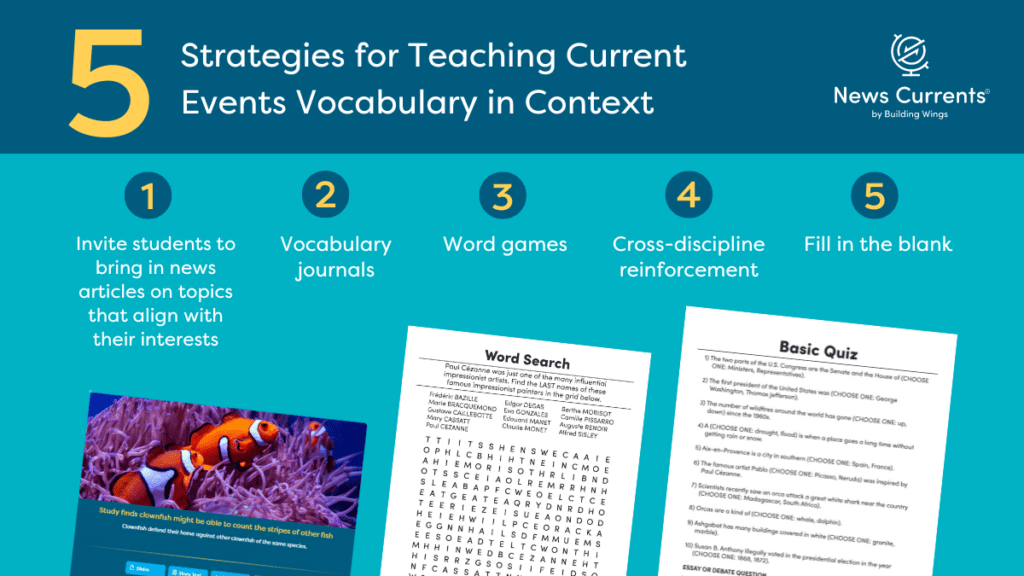How to Build Vocabulary
Using Current Events
Introducing vocabulary instruction within the context of current events is a powerful addition to your instructional day. It will help your learners develop skills that deepen their understanding of the nuances of language, broaden their knowledge of the world, and invite curiosity about contemporary issues and language.
Vocabulary and reading comprehension are two essential aspects of literacy, and can be grown by building background knowledge. This vocabulary-building strategy was shared by Natalie Wexler, who stated:
“If we want to boost students’ vocabulary–and their comprehension–
we need to systematically build their knowledge.”
And what better way to build knowledge than to introduce students to what’s happening in the communities and countries of the world?

Teaching Vocabulary in Context Is a Best Practice
It’s been well-documented that rote memorization is an ineffective learning strategy. Our short-term memory stores information for only a short period of time–about thirty seconds. That’s why we can briefly remember the telephone number we just looked up, and then forget it in a matter of moments.
To move knowledge from our short-term memory to our long-term memory, where information is held indefinitely, two things need to happen: the knowledge needs to be memorable and repeated. The best way to make something memorable is to connect it to something we already know: our previous knowledge.
Material in isolation is far less memorable than material in context. For example, if you’re trying to help learners remember the date of the fall of the Berlin Wall (November 9, 1989), “nine-one-one” (9/11) is an emergency phone number they likely know well, and 1989 happens to be a popular album by the famous singer-songwriter Taylor Swift. If you connect 9-1-1 with Taylor Swift–a uniquely memorable combination.
A Perfect Pairing: Vocabulary and Current Events

- Real-life relevance. It’s not uncommon for students to feel as if there’s a disconnect between what they’re learning in the classroom and its applicability to the “real world.” Using current events in vocabulary lessons ensures there’s no such disconnect and that learning is not confined to abstract or impractical concepts. Instead, it’s a dynamic and engaging strategy that reflects the world students inhabit. Connecting vocabulary to real-life scenarios makes the learning experience feel more meaningful and important.
- Contextual understanding. Vocabulary presented in context–that is, not as a single word on a list to memorize–helps students grasp the nuances of words within specific situations. Because current events cover such a vast array of topics, students can see the versatility of words, transforming them from isolated, memorized information to a tool for communication and expression.
- Critical thinking. Reading about current events and analyzing news articles require critical thinking skills. Students learn how to process information while discerning a word’s meaning through its context. This not only enriches their vocabulary, but also cultivates essential skills for evaluating information–a crucial skill in an era of fake news, viral posts, and information overload.
How to Build Vocabulary in Context: 5 Strategies

Teaching current events vocabulary doesn’t just mean giving students articles to read and asking them to determine a word’s meaning through its context. There are ways to make current events vocabulary instruction that is strategic and dynamic for every learner in every classroom.
- Invite students to bring in news articles on topics that align with their interests. Encourage students to read these articles collaboratively, which not only helps them determine vocabulary definitions together, but also sparks engaging conversation and fosters a sense of classroom community.
- Vocabulary journals. Introduce vocabulary journals so that each learner has a record of the words they are learning. Students can add words, drawings, definitions, or other images to enhance comprehension. It’s also fun to see how the same word can lead students down different paths. For example, one student might find the word “exodus” in an article about workers threatening to quit their jobs at a particular company, while another student might find “exodus” used in the context of citizens fleeing a country.
- Word games. Crossword puzzles and Jeopardy-style games with students working in teams infuse vocabulary learning with energy and fun.
- Cross-discipline reinforcement. Challenge students to use the current events vocabulary they’re learning in their work for other subjects. Students will have to apply the vocabulary in new contexts while completing other assignments.
- Fill in the blank / Cloze lessons. Give students a current events news article with targeted words eliminated. You can make this even more challenging by using vocabulary words from one current events topic in a news article about a different topic.
Effective vocabulary instruction is not memorizing definitions. It involves understanding definitions within a context, developing skills that deepen students’ understanding of the nuances of language, broaden their understanding of the world, and invite curiosity about contemporary issues.
Looking to bring a current events resource to your teachers and students? Explore News Currents, an online current events platform that connects conventional learners in grades 3-12, to the world around them with custom-written current events articles for teacher-led discussions, interactive slides, and activities for students to demonstrate understanding.

